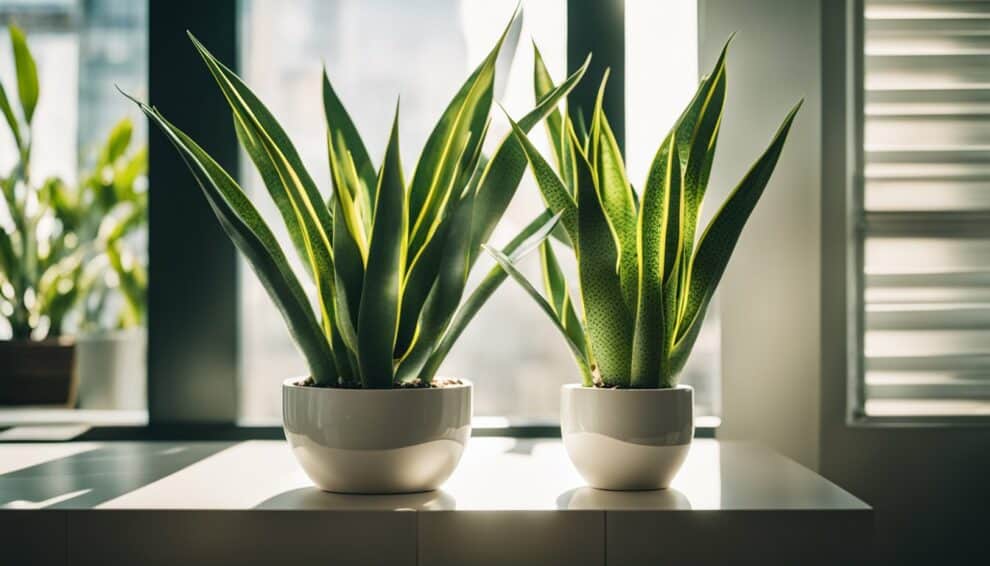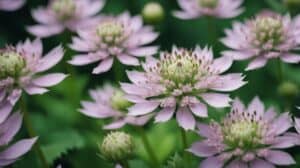Sansevieria Trifasciata, commonly known as the Snake Plant or Mother-in-Law’s Tongue, is a popular houseplant that is native to West Africa.
This resilient plant is known for its ability to survive in a wide range of conditions, making it a favorite of novice and experienced gardeners alike.
In this article, we will explore some interesting facts about the Snake Plant and why it has become a favorite among indoor plant enthusiasts.
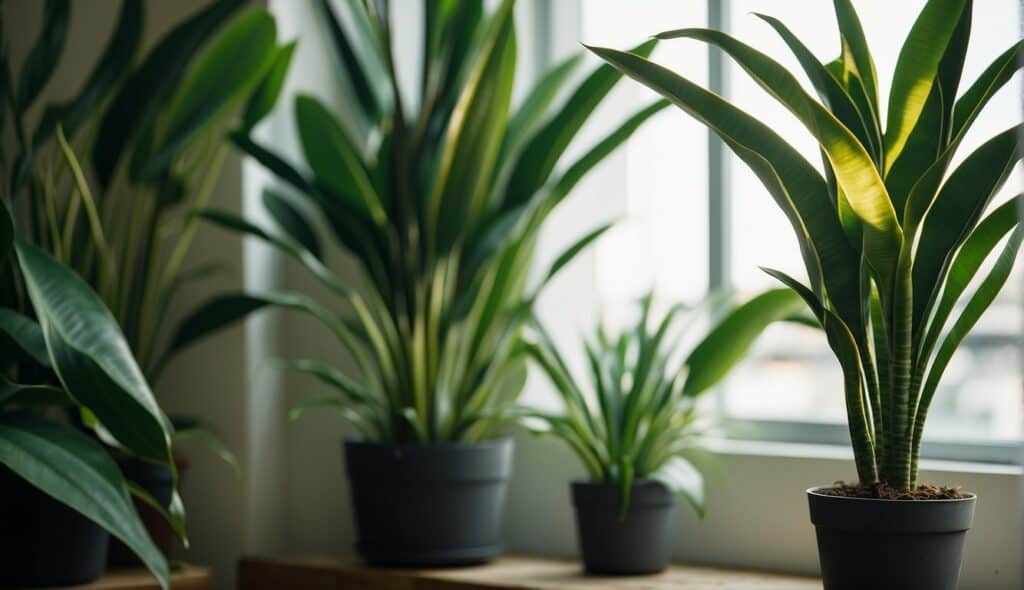
One of the most interesting facts about the Snake Plant is its ability to purify the air.
According to a study by NASA, the Snake Plant is one of the best plants for removing toxins such as formaldehyde, benzene, and trichloroethylene from the air.
This makes it an excellent choice for homes and offices that are located in areas with high levels of pollution.
Another interesting fact about the Snake Plant is its resilience.
This plant can survive in a wide range of conditions, from low light to bright, direct sunlight, and from dry soil to wet.
It is also resistant to pests and diseases, making it an excellent choice for those who are new to gardening or who do not have a lot of time to devote to plant care.
Overall, the Snake Plant is a versatile and resilient plant that is easy to care for and adds a touch of green to any indoor space.
Origins and History
Sansevieria Trifasciata, commonly known as the Snake Plant, is a species of flowering plant that belongs to the Asparagaceae family.
This plant is native to West Africa, specifically Nigeria and the Congo, but is now widely cultivated worldwide due to its hardiness and attractive appearance.
Native Habitat
In its native habitat, the Snake Plant grows in a variety of environments, including forests, savannas, and rocky outcrops.
It is well adapted to survive in arid conditions, making it a popular choice for indoor houseplants.
The plant features long, upright leaves that are typically green with yellow stripes or variegation.
Historical Uses
The Snake Plant has a long history of use in traditional medicine and has been used to treat a variety of ailments, including headaches, respiratory problems, and snake bites.
In some cultures, the plant is believed to have protective properties and is often placed in homes to ward off evil spirits.
In addition to its medicinal properties, the Snake Plant has also been used for various practical purposes.
Its fibers have been used to make ropes, baskets, and even clothing, while its leaves have been used to create a natural dye.
Overall, the Snake Plant’s resilience, hardiness, and versatility have made it a beloved plant in many cultures and an increasingly popular choice for indoor gardening.
Botanical Characteristics

Physical Description
Sansevieria trifasciata, commonly known as the Snake Plant, is a perennial evergreen plant that belongs to the Asparagaceae family.
It is native to Africa and is widely cultivated as an ornamental plant due to its unique appearance and easy care.
The plant has long, upright, sword-shaped leaves that grow from a basal rosette.
The leaves are thick, fleshy, and pointed, with green-gray coloration and yellow margins. The plant can grow up to 4 feet tall and 2 inches in diameter.
The leaves of the Snake Plant are arranged in a rosette pattern, with each leaf growing from a central point.
The leaves are arranged in a spiral pattern, which gives the plant its distinctive appearance.
The leaves are also covered in a waxy coating that helps to prevent water loss and protect the plant from pests and diseases.
Growth Patterns
The Snake Plant is a slow-growing plant that prefers bright, indirect light and well-draining soil.
It is a hardy plant that can tolerate a wide range of temperatures and humidity levels.
The plant is also drought-tolerant and can go for long periods without water. In fact, overwatering is one of the most common causes of plant failure.
The plant produces rhizomes, which are underground stems that allow the plant to spread and grow new shoots.
The rhizomes also store nutrients and water, which allows the plant to survive in dry conditions.
The Snake Plant is a low-maintenance plant that requires little care once established.
It is an ideal plant for beginners and busy people who want to enjoy the beauty of plants without spending a lot of time caring for them.
Care and Maintenance
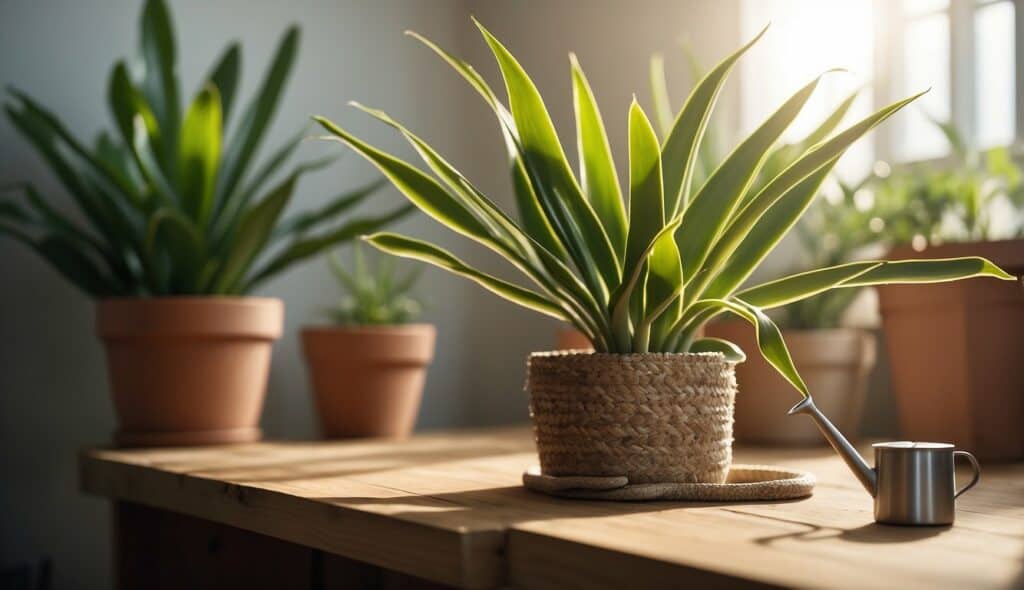
Watering Requirements
Sansevieria trifasciata, commonly known as the Snake Plant, is a low-maintenance plant that requires minimal watering.
Overwatering can cause root rot, so it’s important to let the soil dry out completely between waterings.
It’s recommended to water the plant once every two to three weeks, depending on the humidity and temperature of the room.
Light and Temperature Needs
The Snake Plant can thrive in a variety of lighting conditions, from low to bright indirect light.
However, it’s important to avoid direct sunlight, as it can scorch the leaves.
The plant can tolerate a wide range of temperatures, from 50 to 85 degrees Fahrenheit, making it a great choice for both indoor and outdoor spaces.
Soil and Fertilization Tips
The Snake Plant prefers well-draining soil that’s rich in organic matter. A mix of potting soil, perlite, and sand can provide excellent drainage.
Fertilization is not necessary, but if desired, a balanced liquid fertilizer can be applied once every three to four months during the growing season.
Repotting Guidelines
Sansevieria trifasciata grows slowly and doesn’t require frequent repotting.
It’s recommended to repot the plant every two to three years, or when the roots have outgrown the pot.
Use a slightly larger pot with fresh soil mix and be careful not to damage the roots during the repotting process.
Benefits and Uses
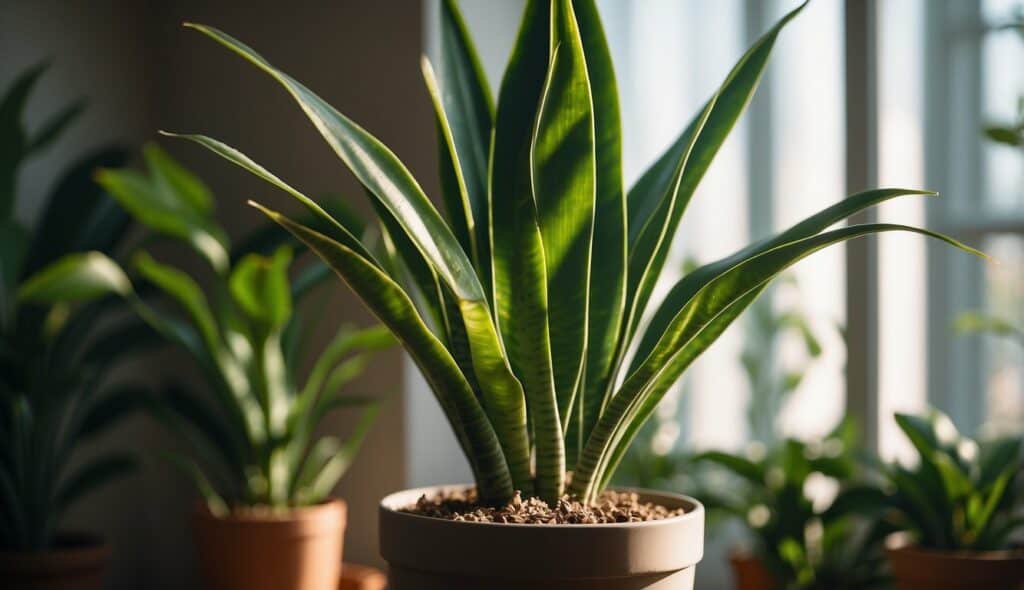
Sansevieria Trifasciata, commonly known as the Snake Plant, is a popular houseplant known for its resilience and low-maintenance qualities.
In addition to being aesthetically pleasing, the Snake Plant has several benefits and uses that make it an ideal addition to any home or office.
Air Purification Qualities
One of the most significant benefits of the Snake Plant is its ability to purify the air.
According to a study conducted by NASA, the Snake Plant can remove toxins such as formaldehyde, benzene, and trichloroethylene from the air.
This makes it an excellent choice for those who suffer from allergies or respiratory problems.
Decorative Appeal
Aside from its air-purifying qualities, the Snake Plant is also an attractive addition to any room.
With its tall, upright leaves and striking variegated patterns, it can add a touch of elegance and sophistication to any space.
Additionally, it comes in a variety of sizes, making it suitable for both small and large areas.
Medicinal Properties
The Snake Plant has also been used for medicinal purposes for centuries.
In traditional medicine, it is believed to have anti-inflammatory, analgesic, and antipyretic properties.
It has been used to treat various ailments such as headaches, hemorrhoids, and menstrual cramps.
In conclusion, the Snake Plant is not just a beautiful plant but also has several benefits and uses that make it an excellent choice for any home or office.
With its air-purifying qualities, decorative appeal, and medicinal properties, it is a plant that is both functional and aesthetically pleasing.
Frequently Asked Questions
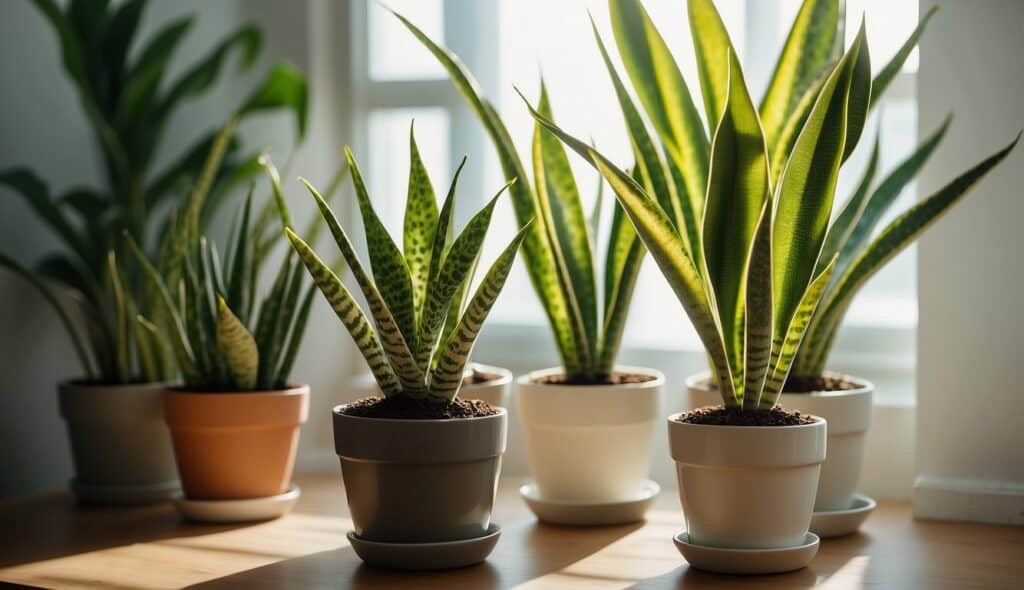
What are the top benefits of having a snake plant in your home?
Snake plants are great air purifiers and can remove toxins such as formaldehyde, xylene, and benzene from the air.
They also release oxygen at night, making them an ideal plant to keep in your bedroom.
How does a snake plant contribute to a home’s feng shui?
In feng shui, snake plants are believed to bring good luck and positive energy to a home.
They are also said to promote harmony and balance in the space they occupy.
In what ways can snake plants be used for medicinal purposes?
Snake plants have been used in traditional medicine to treat various ailments such as headaches, respiratory problems, and skin irritations.
However, it is important to note that more research is needed to confirm their effectiveness.
Can snake plants have an impact on your spiritual well-being?
Some people believe that snake plants can help to purify and protect their homes from negative energy.
They are also said to promote feelings of calmness and relaxation.
What makes snake plants particularly hardy and low-maintenance?
Snake plants are known for their resilience and ability to thrive in low-light and dry conditions.
They require very little water and can go weeks without being watered.
Why might someone consider placing a snake plant in their bedroom?
As mentioned earlier, snake plants release oxygen at night, making them an ideal plant to keep in your bedroom.
They also absorb carbon dioxide and other toxins, which can improve the air quality in your bedroom and promote better sleep.






